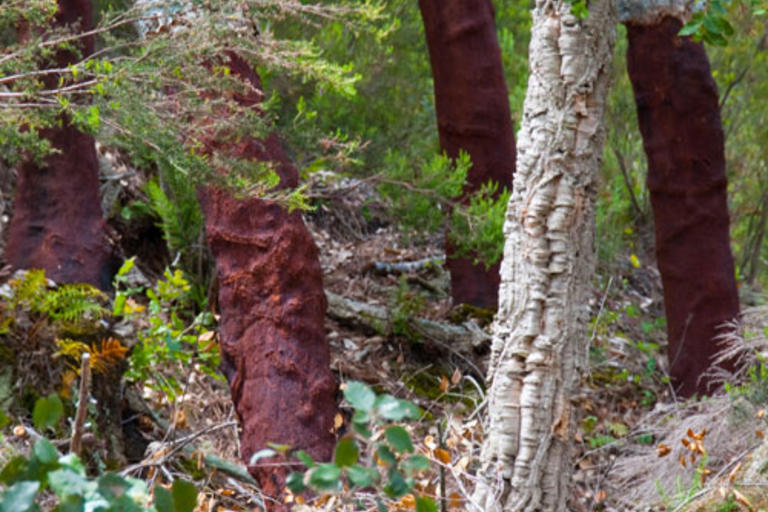
Introduction
One of the typical uses for these forests was the extraction of the cork bark from the tree. The wider the tree, the larger and more valuable the planks obtained. Every 9 years, at the start of the summer, cork is extracted. The bark can be taken from this tree which then regenerates this. The smooth, dark red trunk that's left after they are peeled is eye-catching. Once extracted from the tree, the cork planks undergo a series of traditional processes until the material used to make corks is obtained. They are pressed and left to rest (9-12 months). Then they are classified based on their use. Then they are boiled and left to rest again (7-15 days). Later, the manufacturing processes start with operations like scraping, slicing and marking, to turn the planks into prisms the size of a bottle cork. The operator doing the cutting had to be skilled to make the most of the material. Sant Feliu was a very important centre for the cork industry. Today, despite the decline of the industry, some businesses are still operating.